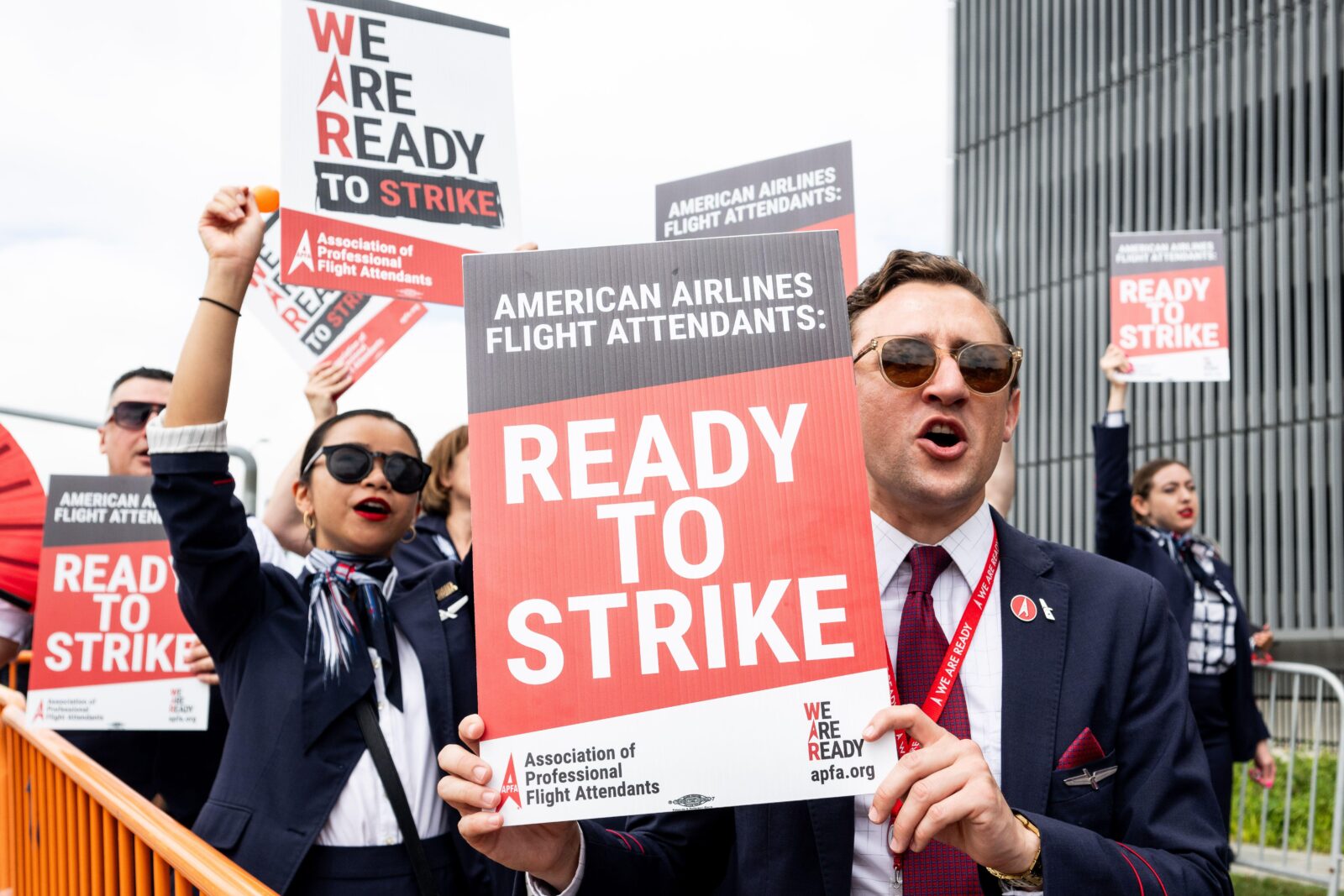
Flight attendants at American Airlines are to descend on the White House in Washington DC on Thursday to protest the difficulties they are facing in winning the right to strike despite an overwhelming number of crewmembers voting to approve a walkout in stalled contract talks.
Although there are now some signs of progress in negotiations between the Fort Worth-based airline and the Association of Professional Flight Attendants (APFA), the union is becoming increasingly irked with how difficult it has become to utilise its legal right to go on strike.
Strike action, or at least the threat of strike action, is a useful and much-used negotiation tool in contract talks, but APFA believes American Airlines doesn’t have to worry about a flight attendant walkout grinding its operation to a standstill because there’s very little chance that regulators will let crewmembers actually go on strike.
Unionized flight attendants are governed by the Railway Labor Act and the National Mediation Board, which gets the final say on whether crewmembers can be released to a 30-day cooling period, after which a strike can legally go ahead.
The NMB has to be convinced that both sides in the negotiation process have reached an impasse before they authorize a cooling-off period, but despite APFA’s stance that this is where talks have reached, the NMB shows no sign of authorizing a release to strike.
APFA first asked the NMB for a release to strike last November, but the union was quickly rebuffed by the three-member panel, which urged the two sides to redouble their efforts to secure a contract.
The union went back to the NMB in January to ask for a release to strike for the second time but five months later, the panel is yet to make a final determination.
Although the NMB is meant to be independent, the panel is appointed by the President and the decision to release flight attendants to strike is a highly politicized one which would have major ramifications for the serving administration.
A flight attendant walkout at an airline the size of AA would cause travel chaos for hundreds of thousands of Americans, and in the run-up to what is going to be a tightly fought Presidential election in November, the Biden administration is unlikely to want to disrupt and frustrate swing voters.
Nonetheless, APFA wants to put pressure on the Biden administration and make their voices heard in protests outside the White House, as well as a slew of airports across the United States on Thursday.
AA’s flight attendants haven’t had a pay raise in five years as a result of the lengthy negotiations, but APFA warns that “without a credible strike threat, airline management is perfectly happy to prolong negotiations for years”.
“There have only been two releases to strike since 2006, compared to dozens of releases in the 1980s and 1990s,” the union told its members last month.
American Airlines has offered its flight attendants a pay raise of around 11% which would bring them in line with their peers at Delta Air Lines. The union is demanding a raise closer to 35%, along with retro pay for missed wages during the negotiation process.
Contract talks have been further complicated by the ‘industry-leading’ contract recently won by Southwest’s flight attendants, which, by some accounts, make them the highest-paid flight attendants in the US airline industry.
Related
Mateusz Maszczynski honed his skills as an international flight attendant at the most prominent airline in the Middle East and has been flying ever since... most recently for a well known European airline. Matt is passionate about the aviation industry and has become an expert in passenger experience and human-centric stories. Always keeping an ear close to the ground, Matt's industry insights, analysis and news coverage is frequently relied upon by some of the biggest names in journalism.







